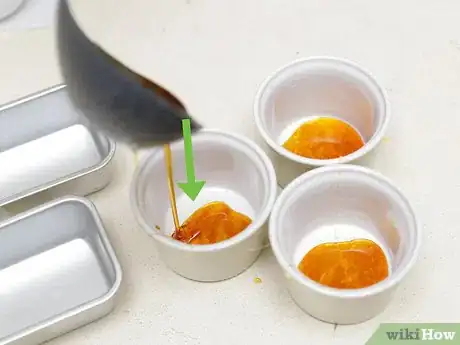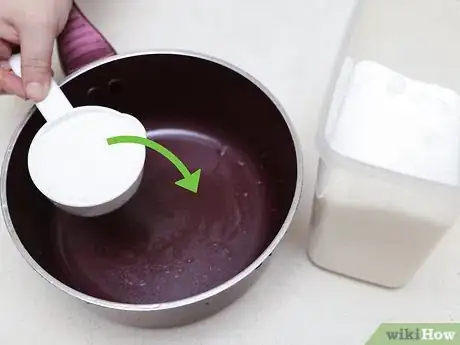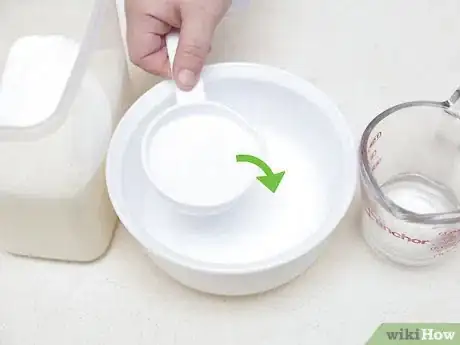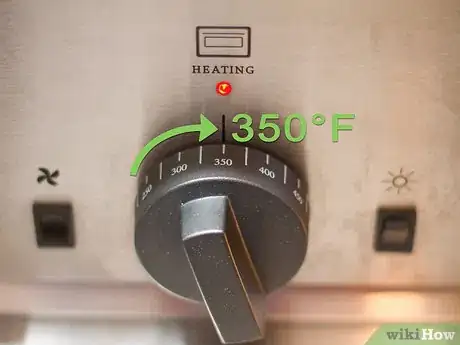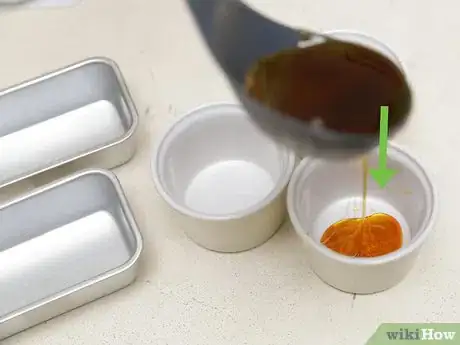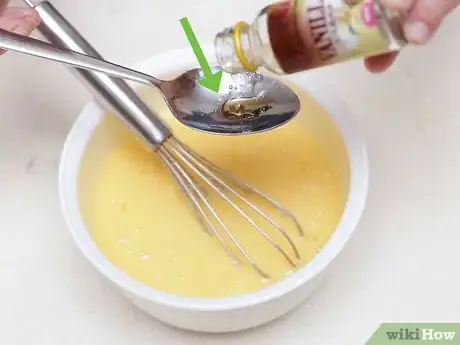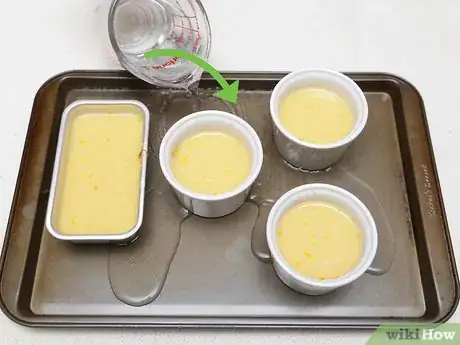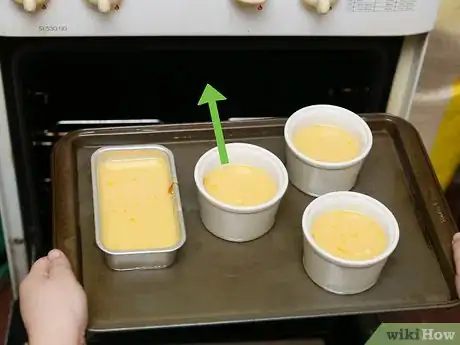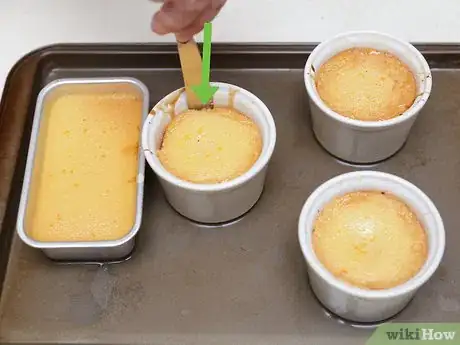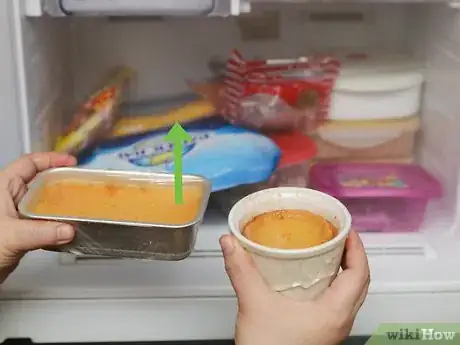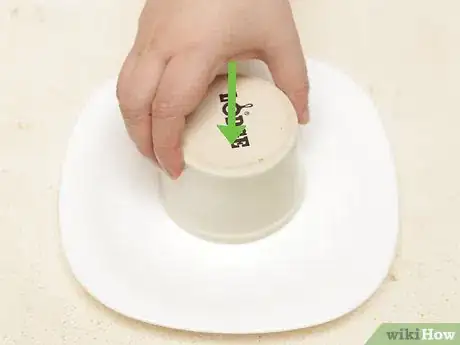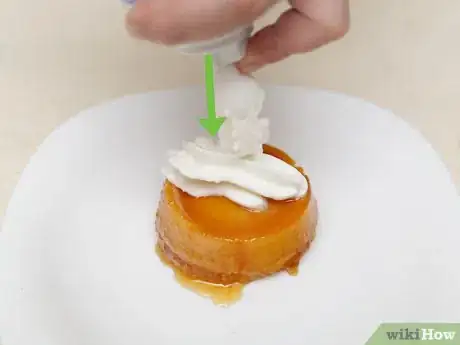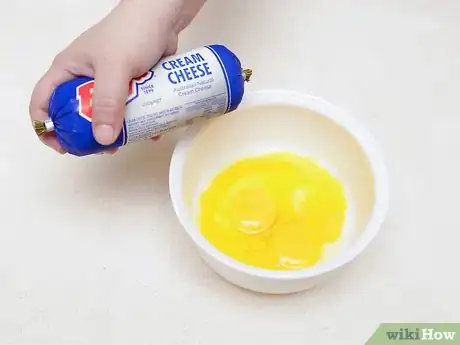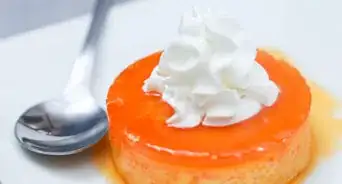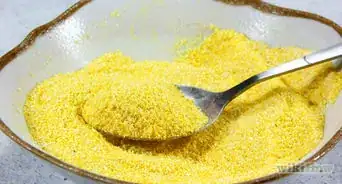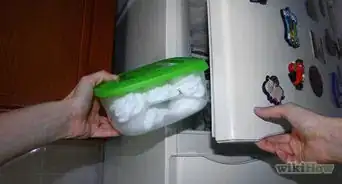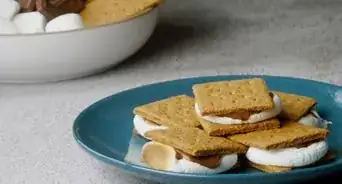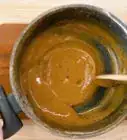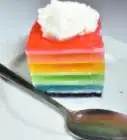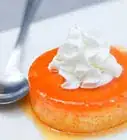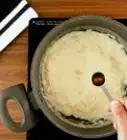This article was co-authored by Craig Watson. Craig Watson is a Baker, Entrepreneur, and the Founder of Baked Cravings, a nut-free bakery in New York City. With eight years of experience, he specializes in creating high-quality baked goods in a nut-free facility. Baked Cravings has received The Best of Manhattan Award. Craig holds a Bachelor's Degree in Accounting from New Jersey City University and a Master of Business Administration in Marketing from Wilmington University.
There are 10 references cited in this article, which can be found at the bottom of the page.
This article has been viewed 421,632 times.
Flan is an egg custard dessert that's extremely popular in most Hispanic countries. Rich and delicious, it only requires a few basic ingredients and a simple set of techniques to cook. However, anyone with allergies to eggs or milk should not try it.
Ingredients
- 3/4 cup (170 g) sugar
- 1 can (12oz) evaporated milk
- 4 eggs
- 1 can (14oz) condensed milk
- 1 tablespoon pure vanilla extract
Steps
Making the Caramel Topping
Pick only one of the following methods, using whatever is easiest for you:
-
1Make your caramel and pour it into your baking dish before making the flan. The caramel needs time to set before the flan is poured in, so it should be made first. Choose any of the three caramel methods below and then, while the caramel is still hot, pour it into the bottom of your baking dish(s). You can then move on to the actual flan.
-
2Craft a basic caramel by melting white sugar on the stovetop. This is perhaps the most common method, as all it requires is granulated sugar and a heavy-bottomed pan. Simply place the 3/4 cup sugar in the bottom of the pan and turn the heat on medium. Stir occasionally, breaking up any clumps, until the sugar is the color of a bright copper penny. Immediately remove from heat.
- A thick-bottomed pan is essential here -- as it will hold and distribute heat well to prevent parts of the sugar from burning.[1]
- Lighter-colored pans make it easier to see when the sugar is done cooking.
Advertisement -
3Get a smoother stovetop caramel by making a "wet caramel" with water. This method is a little more fickle, but it makes a smoother caramel by a long shot. To make it, combine 1 cup sugar, 1/4 cup water, and 1/4 teaspoon lemon juice in the bottom of a heavy-bottomed pan (off the heat). Once mixed, heat on medium-high heat until it boils, stirring throughout. Once it boils, stop stirring completely. Just wait and watch until it gets a copper penny color, then remove from the heat and let cool.
- Stirring agitates the sugars and creates a simple crystal -- AKA, sugar cubes, not liquid caramel. Once it boils, stop stirring.
- Use a wet rubber spatula if you need to scrape some sugar off the sides of the pan back into the mixture.[2]
-
4Make a simple microwave caramel with water and sugar. Quick and easy, it won't look like restaurant-quality caramel but will have all the taste. Simply mix 1 cup sugar with 1/4 cup water in a microwave-safe glass cup. Stir so that all the sugar is wet and microwave for 5 minutes. After the 4 minute mark, don't take your eyes off the mixture. Once it hits a copper color, like a bright new penny, take it out of the microwave. If it isn't there by 5 minutes, keep cooking in 30-second increments.[3]
Making the Flans
Move on to the flan as soon as you finish the caramel
-
1Pre-heat the oven to 350°F/175°C while the caramel is cooking. Once you have the caramel in the ramekins, you want to work somewhat quickly. Get the oven hot quickly so that you can start cooking the flans as soon as you're done mixing.[4]
-
2Swirl the hot caramel around your baking dish so it coats the entire bottom. As soon as it comes off the heat, pour the copper-colored caramel into the bottom of either a large 9-inch glass pie pan or individual ramekins. Swirl it a bit so the entire bottom of the dish is coated. This will harden into the sugar disc topping your flan.
- Caution: This sugar will be extremely hot.
- Want a perfectly smooth caramel? Pour this syrup through a fine mesh strainer as it goes into the baking dishes.[5]
-
3Whip the 4 eggs together until frothy, then add the two cans of milk and whip together. You want a completely smooth, well-mixed liquid. Use a nice large mixing bowl so that you can really whip it together without spilling.
-
4Add in the tablespoon vanilla, and any other flavors or spices you might want. This is the time to lightly customize your flan, though you don't want to go overboard. You should always add the vanilla, as it brings out the richness of the dessert. In addition, try a pinch of cinnamon and nutmeg, a touch of almond extract, or even 1/2 cup of shredded coconut.[6]
-
5Pour the mixture into your pie pan or individual ramekins. Leave about a 1/4 inch at the top so that they don't bubble over, but flan shouldn't rise and you don't need a ton of room.
-
6Place the baking dish(s) in a larger, rimmed dish and fill this with 1-2 inches of hot water. This is called a water bath, and it helps prevent the sugar from quickly reheating and liquefying. You'll have a much more evenly cooked dessert as a result.
- Some cooks actually boil the water before pouring it in, getting the water near cooking temperature as soon as it goes in the oven. This can lead to a slightly firmer flan.[7]
- If you can't make a water bath for whatever reason, cover the flans with aluminum foil as they cook. This will help retain moisture and prevent the tops from burning.[8]
-
7Cook for 1 hour, or until the flans are set and barely jiggle when shook. To test even further, stab a flan with a toothpick. When you remove it, it should come up relatively clean -- not covered in chunks or liquid. Take the flans carefully out of their hot water bath, but don't let them cool just yet
-
8With a knife, loosen the edges of the flan from the bowl. Cut around the entire flan to loosen it from the sides, allowing you to easily remove it after it cools.
-
9Cool and refrigerate for at least 1-3 hours before serving. This will "set" the mixture, helping it keep its shape when served.
-
10Turn the flan bowls over on a plate to serve. You want the caramel to become the top of the flan. So simply place a plat on top of the dish or ramekin and flip everything. If you cut the edges of the flan before hand, it should slide out easily.[9]
-
11Serve cold, with an extra drizzling of caramel sauce if you feel like making it. Of course, the caramel you cooked earlier will be hard by now, but you can always whip up more easily.
Crafting Flan Variations
-
1Add a softened 8-oz package of cream cheese to the eggs and milk for a "Flan de Queso." Leave the cheese out for 10-20 minutes to soften to room temperature, then blend it until soft. Then, add the eggs and milk and continue mixing until smooth. Once you have an even consistency, stop blending and move on with the recipe like normal.[10]
-
2Replace the condensed milk with a can of coconut cream for a "Flan de Coco." This lightly sweetened flan will have a nice hint of coconut without getting too strong. To push it over the top, toss in a 1/2 cup of shaved coconut after mixing all the liquids and eggs together.
-
3Throw in a touch of instant coffee for an espresso flan. Dissolve two tablespoons of coffee into a tablespoon of water, then add this to the wet ingredients along with a pinch of cinnamon and the tablespoon of vanilla.
-
4Toss in a pinch of fruit juice and/or zest, usually citrus. A cup of orange juice or pineapple juice is not uncommon for adventurous flan-makers. Grab the zest from half an orange or lemon for a more subtle citrus taste, or use a bit of juice and zest together to take it to the next level.[11]
- For a "Flan de Pina," or pineapple flan, use 2 cups of pure pineapple juice, and 1 can of condensed milk for liquids, then add 2 tablespoons dark rum to cut the sweetness slightly.[12]
-
5Melt 1/3-1/2 cup chocolate chips in the milk, stirring frequently, before adding to the eggs to make chocolate flan. Make sure you let the chocolate cool before you mix it into the eggs, otherwise the eggs could accidentally cook. Heat the milk, add the chocolate, and remove from the heat, covering and stirring to mix the chocolate in.[13]
Community Q&A
-
QuestionHow many eggs and how much milk would I need for 30 pieces?
 Community AnswerIt looks like the recipe makes about 5 ramekins' worth, so multiply all ingredients by 6 to get 30 portions.
Community AnswerIt looks like the recipe makes about 5 ramekins' worth, so multiply all ingredients by 6 to get 30 portions. -
QuestionHow do I melt sugar without it turning rock hard?
 LockeyCommunity AnswerWatch it carefully. Don't leave it. Check the temperature often.
LockeyCommunity AnswerWatch it carefully. Don't leave it. Check the temperature often. -
QuestionWhat can I use if I don't have a steamer?
 Community AnswerYou can use a double boiler, that you can make from stacking two pots on top of each other in the event that you do not have a steamer.
Community AnswerYou can use a double boiler, that you can make from stacking two pots on top of each other in the event that you do not have a steamer.
Warnings
- Caramelized sugar is extremely hot, and may harden and stick to your skin if you're not careful, leading to serious burns.⧼thumbs_response⧽
References
- ↑ http://www.tasteofhome.com/recipes/creamy-caramel-flan
- ↑ http://www.craftsy.com/blog/2014/01/caramalizing-sugar/?_ct=rbew&_ctp=76074
- ↑ http://www.epicurious.com/expert-advice/how-to-make-homemade-caramel-sauce-in-the-microwave-article
- ↑ http://allrecipes.com/recipe/20979/spanish-flan/
- ↑ www.craftsy.com/blog/2014/03/how-to-make-homemade-flan/
- ↑ http://allrecipes.com/recipe/108362/flan-de-coco-coconut-flan/
- ↑ http://www.tasteofhome.com/recipes/creamy-caramel-flan
- ↑ http://allrecipes.com/recipe/20979/spanish-flan/
- ↑ http://www.elboricua.com/flan.html
About This Article
Before you start making flan, preheat the oven to 350 °F. To make the caramel topping, melt sugar in a heavy-bottomed pan until it turns bright copper, then immediately pour it into a baking dish. In a separate bowl, whip the eggs until they are frothy, then add the milk and vanilla. Pour your mixture over the caramel, and place the whole dish onto a baking tray filled with 1 to 2 inches of water. Cook for 1 hour, then refrigerate. Scroll down to learn how to serve your flan!
